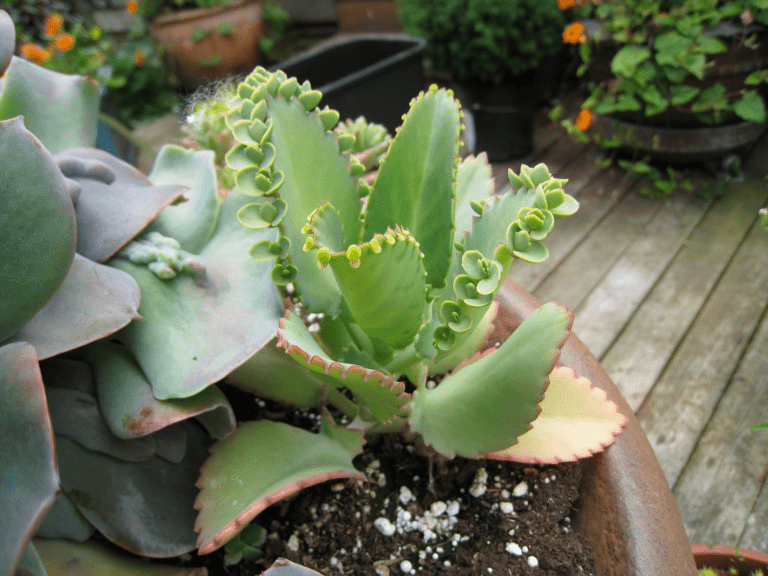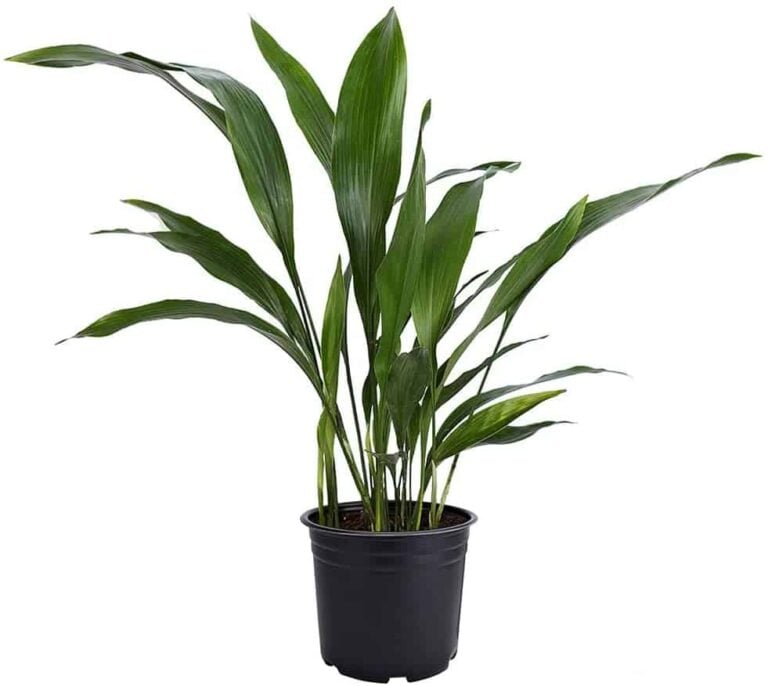Variegated ZZ Plant: A beautiful variety of an already popular plant
Variegated zz plants, a stunning variety of the popular houseplant Zamioculcas zamiifolia, have recently gained considerable attention due to their unique and eye-catching foliage. These plants, often referred to as Zanzibar Gems, are known for their lush green leaves marked with striking patterns of white, yellow, or lighter shades of green. The combination of variegated colors lends an added decorative touch to any indoor space, making them highly sought-after by plant enthusiasts and interior designers alike.

In addition to their striking appearance, variegated zz plants are also favored for their low-maintenance needs and adaptability to a variety of indoor conditions. Native to southern and eastern Africa, they are well-suited for xeriscaping, a landscaping practice focused on minimizing the need for watering. This hardy nature makes them an excellent choice for both experienced and beginner plant caretakers. However, it’s important to note that variegated zz plants do require more light than their non-variegated counterparts, as their leaves are less efficient in photosynthesis.
While there are several varieties of variegated zz plants, two cultivars have been patented: Zamioculcas zamiifolia ‘LUCKYWHIT’ and Zamioculcas zamiifolia ‘Lucky Variegated.’ Both types feature beautiful, marbled leaflets in a range of yellowish-green colors. As interest in these plants continues to grow, more cultivars and striking patterns are likely to emerge, making the world of variegated zz plants even more diverse and fascinating.
Table of Contents
Appearance and Features
Foliage
The variegated ZZ plant (Zamioculcas zamiifolia ‘Variegata’) is an ornamental, perennial houseplant known for its glossy foliage. Each leaflet on the plant is distinctively green and cream-colored, creating an eye-catching combination. These plants have an upright stem where the leaflets grow and are considered a low-maintenance houseplant. The glossy green and cream-colored foliage on this plant creates a stunning, two-toned visual effect.
Variegation Patterns
Variegated ZZ plants display a range of variegation patterns that may vary depending on factors such as growing conditions and the specific cultivar. Some ZZ plant varieties have green foliage with white and yellow variegation, which can fade if the plant does not receive adequate light. Another popular variety is the ‘Dark Zamicro’, which has slightly different green hues in the foliage.
In general, the variegation patterns of these plants add an unique touch to their overall appearance. It’s important to note that the intensity of these patterns may change depending on factors such as light exposure and the overall health of the plant. To keep the variegation vibrant, ensure that the plant is well-cared for and receives optimal light conditions.
ZZ Plant Varieties
The ZZ plant (Zamioculcas zamiifolia) is a popular houseplant known for its hardiness and attractive foliage. There are several varieties and cultivars of ZZ plants that exhibit different characteristics, including variegated leaves.
Variegated ZZ Plants
One striking cultivar of the ZZ plant is the LuckyWhit variety. This plant features beautiful blotched and marbled leaflets in a yellowish-green hue. The variegated appearance creates a visually appealing contrast against its typically green counterparts.
Emerald Palm and Aroid Palm
Another notable variety is the Emerald Palm, known for its dark green, glossy leaves which have a resemblance to palm fronds. Similarly, the Aroid Palm leans more towards the Araceae plant family and is recognized by its green-creamy yellow glossy leaves.
ZZ Raven
The ZZ Raven variety is an eye-catching cultivar with dark, almost black foliage. It can grow up to 4-6 feet high and makes a dramatic statement in any indoor space.
Rare ZZ Plant Varieties
Some other rare and lesser-known types of ZZ plant include:
- Chameleon: This variety features unique speckled patterns on the leaves
- Hansoti13: A cultivar with distinctively shaped leaflets and a compact growth habit
These rarer types of ZZ plants can be more challenging to find but are worth exploring for enthusiasts looking to diversify their collection.
In summary, there is a wide range of ZZ plant varieties, from the variegated LuckyWhit to the striking ZZ Raven. Each variety offers unique aesthetics and characteristics, providing plenty of options for houseplant enthusiasts.
Ideal Growing Conditions
Light Requirements
The variegated ZZ plant thrives in a range of light conditions, from low light to bright indirect light. However, they do not tolerate direct sunlight as it can cause leaf burn. To provide optimal lighting, place your ZZ plant in a spot that receives indirect sunlight, such as near a bright window with sheer curtains or in a room with plenty of natural light.
Temperature and Humidity
Variegated ZZ plants prefer average household temperatures of 60°F – 80°F during the day and 50°F – 60°F at night. They cannot withstand temperatures below 45°F, so it’s essential to avoid cold drafts and to bring outdoor plants inside when temperatures drop source. Maintaining a temperature above 70°F regularly can encourage more frequent blooms source. As for humidity, the ZZ plant can grow well in average home humidity levels without requiring any special care.
Soil Preferences
Variegated ZZ plants prefer well-draining soil to avoid root rot. A good soil mix consists of:
- 50% potting soil
- 25% perlite
- 25% coarse sand
This combination ensures proper drainage and aeration for healthy root growth. Ensure the pot has drainage holes to help prevent waterlogged soil. Water your ZZ plant sparingly, allowing the soil to dry out between waterings to further prevent root rot.
Care Guide
Watering
Variegated ZZ plants prefer generally dry conditions. To avoid overwatering, allow the soil to dry between watering sessions completely. Make sure you provide well-draining soil, which can contain a mix of perlite and sand to improve drainage. Note that excessive water may cause rhizome rot, leading to the entire plant’s death.
Fertilizing
Feed your ZZ plant with a balanced fertilizer every 4-6 weeks during its active growing season (typically spring and summer). Reduce or stop fertilization during the fall and winter months, as the plant enters dormancy.
Pruning
Prune your ZZ plant to maintain its shape and size. To do so, remove yellow, damaged, or dead leaves by cutting them close to the base. Regular pruning will encourage new growth and keep the plant looking healthy.
Repotting
Repot your ZZ plant every 2-3 years to provide fresh soil and support its growth. During repotting, choose a bigger pot with proper drainage holes and fill it with well-draining soil containing a mix of succulent mix, perlite, and sand. Gently remove the ZZ plant from its original pot, and place it in the new pot. Fill in the gaps with the soil mix, and water it thoroughly.
Common Problems and Solutions
Variegated ZZ plants are relatively easy to care for, but they can still encounter issues, such as pest infestations and poor health due to incorrect care. Some common problems and their solutions are:
- Pest Infestations: Keep an eye out for pests like mealybugs, scale, fungus gnats, and aphids. To eliminate them, use insecticidal soap or a mixture of water and dish soap.
- Leaves turning yellow: This may be caused by overwatering, lack of nutrition, or temperatures below 55°F (12°C). Ensure proper watering, feeding, and keeping the plant in an environment with temperatures between 60-75°F (15-24°C).
- Air-purifying capabilities: The ZZ plant is known for its ability to remove indoor air pollutants like benzene, xylene, toluene, and ethylbenzene. To maintain this benefit, keep the plant’s leaves clean by wiping them with a damp cloth or misting them occasionally.
Propagation Methods
Variegated ZZ plant is a popular houseplant known for its eye-catching leaves and easy-care nature. In this section, we will discuss three common propagation methods: Division, Stem Cuttings, and Leaf Cuttings. Employing these methods can help you grow additional ZZ plants or share them with friends and family.
Division
A highly effective method of propagating a variegated ZZ plant is through root division. This technique involves separating a larger cluster of rhizomes into smaller groups or individual rhizomes. The separated rhizomes can then grow and further divide over time. To achieve this:
- Gently remove the ZZ plant from its pot, and loosen the soil from around the roots.
- Identify the rhizomes, which are the thick, tuber-like structures at the base of the plant.
- Carefully separate the rhizomes into smaller clusters or individual units.
- Plant each separated rhizome in a new container with well-draining soil.
- Water the newly potted plants, and provide them with indirect sunlight.
Stem Cuttings
Another way to propagate a ZZ plant is through stem cuttings. Here are the steps to follow:
- Choose a healthy stem, and cut it at a 45-degree angle using clean, sharp scissors.
- Allow the cut end to dry and callus over for a day or two.
- Place the cut end in a small pot of well-draining soil or water to promote rooting.
- Keep the cutting in indirect sunlight, and maintain consistent temperature and humidity levels.
- Once new growth is noticeable, transfer the cutting to a larger pot if rooted in soil or, if rooted in water, plant it in soil.
Leaf Cuttings
Leaf cuttings are another method for propagating ZZ plants, although it can take longer than the other two techniques. To propagate using leaf cuttings, follow these steps:
- Choose a healthy leaf, and remove it from the stem with a clean, sharp knife.
- Allow the cut end to dry for a day or two.
- Insert the bottom end of the leaf into a small pot of well-draining soil.
- Keep the pot in indirect sunlight, and maintain consistent temperature and humidity levels.
- Be patient, as this process can take several months for new growth to appear.
By utilizing these propagation methods, you can successfully multiply your variegated ZZ plant collection and enjoy its beautiful, tropical appeal.
Toxicity and Safety
ZZ plants are known to be mildly toxic to both humans and pets. They contain a compound that causes irritation when the plant is either touched or ingested. However, the toxicity level is generally not severe enough to cause lasting damage or death.
When handling variegated ZZ plants, it’s important to be cautious and follow some simple safety measures:
- Wear gloves: To avoid skin irritation, it is advised to wear gloves when touching or handling the plant.
- Wash hands: Always wash your hands thoroughly after handling the plant to remove any traces of the irritant compound.
- Keep away from pets and children: To prevent accidental ingestion, it’s best to keep the plant out of reach of pets and children.
In case of ingestion, the reaction may vary depending on the individual or animal. Some common symptoms include:
- Stomach pain
- Vomiting
- Diarrhea
- Lack of appetite
Should you or your pet experience these symptoms after ingesting a ZZ plant, it’s essential to seek medical attention or contact a veterinarian respectively. Although the compound is only mildly toxic, proper care should still be taken.
Even in cases of direct contact with the plant, some individuals might experience mild skin or eye irritation. If such symptoms occur, it is advisable to:
- Rinse the affected area thoroughly with water
- Avoid rubbing your eyes or touching your mouth
- Seek medical assistance if the irritation persists
By adhering to these safety measures, you can enjoy the beauty of the variegated ZZ plant while minimizing any potential risks associated with its toxicity.
Interesting Facts and History
The ZZ plant, or Zamioculcas zamiifolia, is a fascinating species within the Araceae family, native to eastern Africa, southern Kenya, northeastern South Africa, and Tanzania. Known for their shiny leaves that sometimes make them seem artificial, ZZ plants are slow-growing, drought-tolerant, and low maintenance, making them a popular choice for offices and homes.
There are several interesting ZZ plant varieties available, with one of the most notable being the Variegated Zamioculcas zamiifolia. This cultivar has beautiful variegated yellow leaves that brighten up any room. The variegated ZZ plant was discovered in Thailand as a spontaneous mutation and was later patented by Michael Rimland of Miami, Florida.
Other named cultivars of ZZ plants, such as the ‘Dark Zamicro’ and the ‘Raven ZZ plant,’ display different leaf colorings and characteristics. For example, the Raven ZZ plant has nearly black leaves, while the Dark Zamicro sports a more compact growth habit.
ZZ plants have a unique characteristic of storing water within their tubers, making them capable of surviving extended periods of drought. These tubers also make ZZ plants adept at thriving in root-bound conditions, a trait not typically seen in other houseplants. Additionally, they are considered lucky, similar to some other plants like the jade plant or bamboo stalks.
The pinnate leaves of ZZ plants are evergreen, shining with a glossy texture that reflects sunlight and brightens up dim spaces. In their natural habitat, ZZ plants bloom occasionally, producing a spadix hidden within their foliage.
Some of the ZZ plant’s nicknames are Zuzu plant, aroid palm, eternity plant, and emerald palm. ZZ plants have been cultivated in southern and eastern Africa for centuries, and they were introduced to India in the 19th century, where they have also gained popularity.
Overall, the ZZ plant has a rich history and is versatile, adaptable, and visually appealing. Its ability to thrive in a range of conditions – from bright indirect light to minimal water – has contributed to its popularity in homes and offices worldwide. Learn more about the zz plant or zanzibar gem here.



